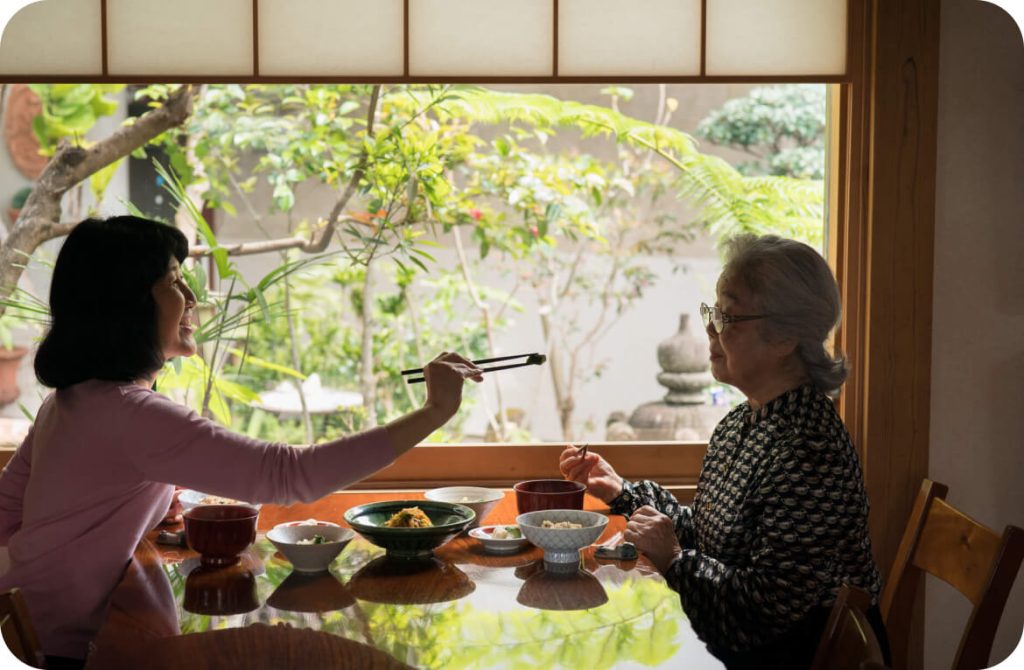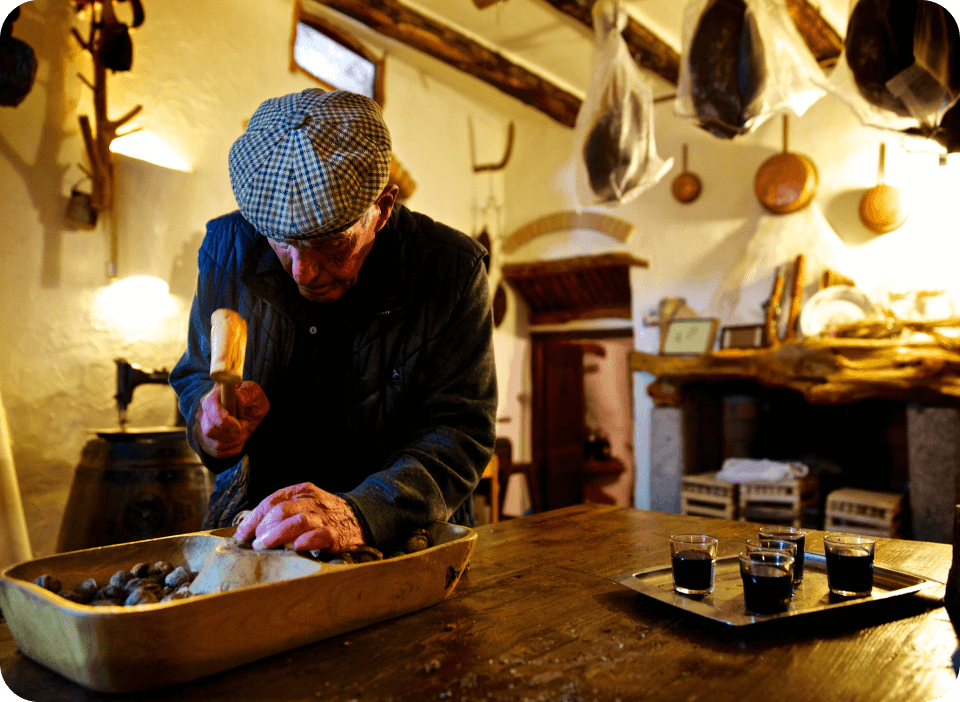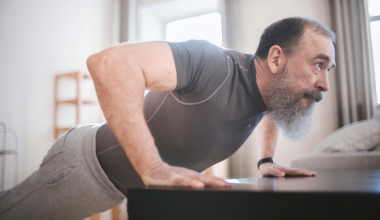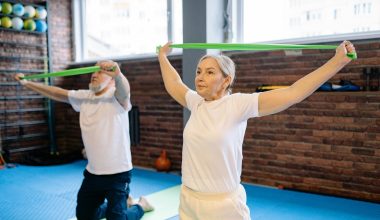Summary
In five global Blue Zones—like Okinawa and Sardinia—people live longer, healthier lives by embracing simple habits: natural movement, strong social ties, plant-focused diets, stress reduction, and purposeful living. These longevity secrets show us it’s not just genetics, but lifestyle and environment that matter. While decamping to one of these locations isn’t always an option, Canadians can adopt these principles at home, creating healthier communities and extending both lifespan and healthspan through small, meaningful changes.
In certain pockets of the world—Okinawa, Japan; Ikaria, Greece; Sardinia, Italy; the Nicoya Peninsula in Costa Rica; and Loma Linda, California—living past 100 healthily isn’t a medical miracle.
In these regions, known as Blue Zones, people not only live longer, but they have a better healthspan without the burden of chronic illness and cognitive decline that many of us assume comes with age.
What’s their secret? It turns out longevity has less to do with genetics and more to do with how—and where—you live. From how they eat to how they move, rest, and connect with others, Blue Zone centenarians share powerful habits that support a longer, healthier life.
Of course, as Canadians, many of us cannot simply move to one of these areas, so the burning question is: Can we bring these longevity lessons home and create our own Blue Zones, right here in Canada?
The Power 9: Longevity Habits from the World’s Healthiest Communities

In 2000, Belgian demographer Michel Poulain and Italian physician Gianni Pes were studying regions in Sardinia, Italy, where male centenarians were unusually common. They identified a cluster of villages with exceptionally long-lived residents and drew blue circles on a map to mark them. They called these areas “Blue Zones.”
Inspired by this work, author and explorer Dan Buettner partnered with National Geographic and a team of medical researchers, anthropologists, and demographers to identify what turned out to be 5 other regions around the world with similar patterns of extraordinary longevity.
They then identified nine principles that each region had in common to enable such remarkable longevity. You don’t need to move to a remote Greek island to benefit from them. You just need to start by incorporating some of them right where you are. Don’t worry that you need to incorporate all nine – why not choose one to start and take it from there.
1. Move Naturally
In Blue Zones, movement isn’t something people schedule—it’s simply a natural part of daily life. Walking to a neighbour’s house, tending the garden, cycling to pick up groceries, kneading bread by hand—these small, consistent actions keep people active without ever stepping into a fitness class.
So, what does this mean for you? If your neighbourhood allows it, try swapping out the car for a walk or bike ride when running errands. Take the long route home. Carry your groceries. Build movement into your day in ways that feel less like exercise and more like living.
2. Know Your Purpose

Whether it’s called ikigai in Japan or plan de vida in Costa Rica, having a reason to get up in the morning is one of the most powerful longevity tools we have. For centenarians in the Blue Zones, there’s no clear line where “work” ends, and retirement begins. People continue to contribute valuable work to their communities, families, and daily life well into old age—often because they want to – not because they have to.
This stands in stark contrast to the traditional Western idea of retirement, which typically means stopping work entirely. While long awaited by many, retirement ranks as the 10th most stressful life event—and for good reason. For some, it brings an increased risk of heart attack, stroke, or a gradual decline in mental and physical health. That said, the effects of retirement vary widely depending on lifestyle, income, and how fulfilling work was in the first place.
So, what does this mean for you? It might be time to rethink retirement not as an end point, but as a pivot. Maybe it’s launching a second career, turning a hobby into a business, or finding a meaningful way to give back through volunteering. Whatever you choose, the key is to wake up every day with a sense of purpose—and a reason to leap out of bed.
3. Downshift Your Stress
Chronic stress is a silent killer—and in Blue Zone communities, people have found simple ways to keep it in check. Daily rituals like afternoon naps, prayer, quiet reflection, or simply sitting and chatting with friends help calm the nervous system and restore balance.
This stands in stark contrast to North America’s hustle culture, where productivity is prized above all else and rest is often seen as laziness. While Blue Zone lifestyles make space for slowing down, we often fill every minute—at the expense of our mental and physical health.
So, what does this mean for you? It might be time to re-evaluate your relationship with busyness. Start by making stress relief non-negotiable. Block out time for mindfulness, yoga, a walk in nature, reading a book or just being still.
Introduce rituals that bring you peace—whether it’s playing a musical instrument, napping, journaling, or sharing a quiet coffee with a friend. You don’t need a total life overhaul. Just a few intentional pauses each day can help protect your health for the long haul.
4. Eat Until You’re 80% Full

In Okinawa, Japan, there’s a simple phrase people say before meals: Hara Hachi Bu. It’s a gentle reminder to stop eating when you’re about 80% full—not when you’re stuffed. This mindful eating practice allows the body time to catch up and register fullness.
Slowing down at the table is one of the simplest, most powerful things we can do for our health. Eating more slowly and stopping before you’re full gives your brain time to catch up to your stomach—something that typically takes about 20 minutes. It also supports better digestion, helps regulate blood sugar, and can reduce inflammation over time. When practiced consistently, it may help with maintaining a healthy weight and reducing the risk of conditions like type 2 diabetes and heart disease.
So, what does this mean for you? Start with small shifts:
- Slow down by putting your fork down between bites or setting a timer to stretch your mealtime to 20–30 minutes.
- Turn off distractions—no phones, no TV. Try focusing on the flavours and textures of your food.
- Use smaller plates to gently reduce portion sizes without feeling deprived.
- Pause midway through your meal and check in with your body: Are you still truly hungry, or just eating because the food is there?
Over time, you may find that eating just a little less—mindfully and with intention—actually leaves you feeling more satisfied, not less.
5. Plant-Slant Your Diet
In Blue Zones, food isn’t just fuel—it’s medicine, community, and tradition. One thing all five regions have in common? A mostly plant-based diet. Meals are built around beans, leafy greens, root vegetables, and whole grains. Meat shows up occasionally and ultra-processed foods, the kind that line most grocery store aisles in North America, are almost entirely absent.
So, what does this mean for you? Changing the food you eat is completely within your control and you don’t need to go vegan or overhaul your pantry overnight. Start small. Try introducing one plant-based meal a day. Swap refined grains for whole ones. Add an extra serving of vegetables to your lunch. Explore lentils, chickpeas, or black beans as your new go-to protein. These ingredients are affordable, versatile, and packed with fibre and nutrients that support long-term health.
6. Sip Wine at 5

In most Blue Zones, moderate alcohol—especially red wine—is part of daily life. It’s sipped slowly, never rushed, and almost always enjoyed with food and good company. But here’s the thing: the benefit isn’t really in the wine itself. It’s in the ritual—pausing at the end of the day, connecting with others, and marking a moment of joy or rest.
That’s where things get interesting for Canadians. According to Canada’s new alcohol guidelines, there’s no truly safe amount of alcohol. Even moderate drinking carries some health risk, and the old idea that wine is “heart-healthy” has largely been debunked by more recent studies.
So, what does this mean for you and how do we reconcile this with Blue Zone wisdom? By focusing on what the ritual represents, rather than what’s in the glass.
The takeaway isn’t “start drinking wine.” It’s make space to unwind and connect. If that means clinking glasses of sparkling water, herbal tea, or a beautifully crafted mocktail—great. The act of slowing down, sharing a meal, and toasting to the day with people you care about is what matters most.
7. Belong to a Community
Faith-based communities play a powerful role in longevity across the Blue Zones. Whether it’s attending church on Sunday, observing the Sabbath, or gathering for communal prayer, regular participation in spiritual or religious practices is a common thread—regardless of denomination or belief system.
So, what does this mean for you? If you’re religious, dig into your faith and see what it brings you. If, like almost 35 per cent of Canadians, you’re not religious, there are all sorts of ways to feel like you belong. It’s the act of coming together regularly with others for a shared sense of purpose, reflection, and human connection that matters. Here are some examples you can explore:
Weekly Shared Meals
Hosting or attending a regular potluck, family dinner, or community meal offers a chance to slow down, share stories, and connect—no screens, just real food and conversation.
Volunteering Together
Joining a local charity, food bank, community garden, or clean-up crew builds both connection and a shared sense of purpose while giving back to the community.
Book Clubs or Film Circles
Reading or watching something together and then gathering to discuss themes, ideas, and emotions creates space for reflection, intellectual growth, and bonding.
Nature or Walking Groups
Regular hikes, walks, or time in nature with others can become a sacred ritual of movement, mindfulness, and conversation—good for the body and soul.
Creative Circles
Groups that meet to write, paint, craft, or make music foster a shared creative outlet and emotional expression in a safe, supportive space.
Support or Peer Groups
Whether it’s for parenting, grief, addiction recovery, or caregiving, peer support groups offer vital emotional connection and shared understanding.
Community Classes or Skill Shares
Regular participation in a group learning activity—yoga, dance, cooking, woodworking—encourages connection through shared experience and personal growth.
Ritualized “Pause” Moments
Gathering weekly for group meditation, intention setting, or even a moment of silence can serve the same reflective function as prayer—without being religious.
8. Put Family First
In Blue Zones, elders are not just cared for—they’re respected and valued. Rather than being sidelined, older adults remain deeply integrated into family and community life. Their wisdom, experience, and presence are seen as assets, not burdens.
Multigenerational households are common, with children, parents, and grandparents often living under the same roof or nearby. This close-knit structure creates a strong support system where responsibilities are shared, and meaningful relationships flourish across generations. Isolation, which can be harmful to both mental and physical health, is rare. The result is a culture where everyone—regardless of age—feels seen, needed, and valued.
So, what does this mean for you? In Canada, this model may feel unfamiliar or even unfeasible for some families—especially given rising housing costs, limited space, and a cultural tendency to independent living. But there are ways to begin integrating these values in ways that work for Canadians.
For example, co-housing initiatives or secondary suites (“in-law” or “granny” flats) can help families stay close while maintaining some independence. Flexible home designs and renovations—like converting basements or adding modular units—make multigenerational living more practical. Even simply choosing to live nearby and committing to shared meals, school pickups, or daily check-ins can build a stronger, cross-generational connection.
It’s also about a mindset shift. Instead of seeing aging as a decline to be managed in isolation, we can begin to frame it as a natural, valuable phase of life—one that deserves integration, respect, and purpose. By weaving elders back into the fabric of everyday family life, we don’t just support them, we strengthen the entire community.
9. Find Your Inner Circle
Researchers have found that health habits—good or bad—are contagious. If your close friends smoke, you’re more likely to smoke. But if they walk regularly, eat more vegetables, limit stress, or spend time outdoors, chances are, you’ll follow suit. The people closest to you help shape how you live, and ultimately, how long—and well—you live.
So, what does this mean for you? Start by reflecting on your current social circle. Who lifts you up? Who encourages your healthy habits—or models them themselves? Strengthen those connections. Reach out more often. Share a walk, a meal, a class, or a goal.
If your circle is small—or doesn’t reflect the life you want to build—it’s never too late to expand it. And if you’re craving deeper relationships, don’t wait for them to find you. Make the first move. Invite. Reach out. Be consistent. Meaningful connection takes time, but it’s worth it—for your mood, your resilience, and yes, your longevity.
🌿 Blue Zones in Action
The Blue Zones Project® partners with communities to make the healthy choice the easy choice—transforming how people live, eat, and connect. Cities across North America, like Fort Worth, Texas, have improved wellbeing and reduced healthcare costs through small, sustainable changes.
You don’t have to move to Okinawa, live off the grid in Costa Rica or undertake changing your entire community to benefit from the habits of the world’s longest-living people. The truth is, you have more control over your health and longevity than you might think—and it starts with small, intentional choices made every day.
Whether it’s eating more plants, walking instead of driving, calling a friend, learning a new skill or taking five quiet minutes to breathe—these aren’t radical changes. They’re simple shifts that, over time, can transform not just how long you live, but how well. So ask yourself: What’s one Blue Zone habit you can begin today? Start there—and keep going.
~ Read more from The Health Insider ~
- Health Canada Authorizes First 8-Week Treatment for Acute Hepatitis C
- The 7-Day Reset: A Social Media Break Can Transform Your Mental Health
- The Science of Sweat: How Saunas Boost Heart & Brain Health
- There’s a Reason Your Voice May Not Be As Clear as it Can Be
- Leftovers Safety: Store & Reheat Like a Pro
The information provided on TheHealthInsider.ca is for educational purposes only and does not substitute for professional medical advice. TheHealthInsider.ca advises consulting a medical professional or healthcare provider when seeking medical advice, diagnoses, or treatment. To read about our editorial process, click here.











